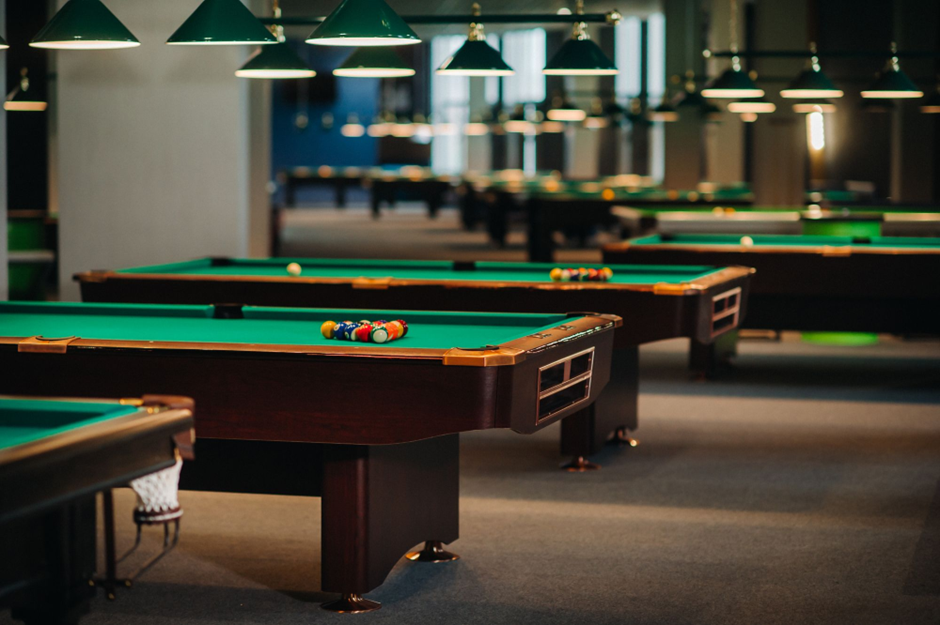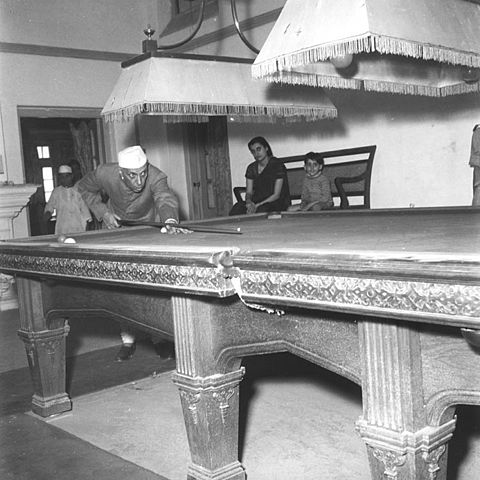The Evolution of Snooker: Discover snooker origins
- Robin Alexander
- Jan 17, 2024
- 8 min read
Updated: Mar 25
Introduction
When most people think of snooker, images of working men's clubs and smoke-filled rooms likely come to mind. However, the game has evolved significantly from its humble beginnings over 150 years ago. In this blog post, we'll take a look at the fascinating history and evolution of snooker from its origins in India in the latter half of the 19th century to its modern-day status as a global sport watched by millions.
Along the way, we'll profile some of the iconic players who have helped elevate snooker to new levels of popularity and professionalism. We'll also examine how technological changes and shifts in attitudes have contributed to snooker's enduring worldwide appeal. Overall, my aim is to provide a holistic and humanized perspective on snooker's rich cultural and competitive journey from past to present.
The Evolution of Snooker: From its origins to modern-day popularity:
Origins in India
Snooker has its roots in another pocket billiards game called billiards. During the British Raj in India in the late 19th century, British Army officers would play a form of billiards that involved striking balls with a long stick. This game was a popular pastime in officers' mess rooms across India.
The game was adapted to include scoring for specific balls and was known as snooker in 1875. The exact origin of the name "snooker" is contested, but some theories point to it being a slang term for inexperienced or rookie British officers in the military. By the late 1870s, snooker had emerged as a distinct game in its own right.
Key aspects introduced in those early days that still define snooker included the use of 22 colored balls (red, yellow, green, brown, blue, pink, black) and the allotment of points based on the color of balls potted. Snooker also differentiated itself from billiards through the use of cushions and its more open table structure.
It wasn't long before enthusiastic British officers brought snooker back with them when returning home from service overseas. This helped spread initial interest and familiarity with the game in the United Kingdom and beyond in the late 19th century. However, snooker's competitive emergence was still some years off.
Rise of the Snooker World Championships
In the late 1870s, the first snooker tournaments began cropping up in Britain. This included amateur competitions held between military regiments and clubs. However, it wasn't until the 1920s that snooker really began to take off commercially as a professional sport.
A major catalyst was the establishment of the World Snooker Championship in 1927. This gave the game its premier global competitive platform and increasing media coverage in newspapers helped further publicity. The first champion was English player Joe Davis, who went on to dominate the tournament throughout the 1930s.
Davis won the first 15 World Snooker titles, establishing early standards of excellence in shot-making and tactical play. His success grew the profile of the championships, with venues like London's Camden Town Hall regularly selling out for the finals. By the late 1930s, snooker celebrities like Davis were attracting crowds of thousands to exhibition matches across the UK.
This surge of popularity coincided with the spread of snooker halls, where amateur players could learn the game. Working men's clubs installed full-sized tables and developed strong league structures. Independent governing bodies also organized club competitions and professional circuits. Snooker was cementing itself as a blue-collar staple of evenings out.
Post-War Recovery and Decline
World War 2 proved a temporary setback to snooker's momentum due to rationing and venue requisitioning. However, the game rebounded well through the 1950s as clubs reopened fully and the sport worked to win back audiences.
This period saw the rise of gifted amateur players like Fred Davis who would turn professional. It also produced the dominant world champions of the era including Walter Donaldson and John Pulman. Thriving club scenes in Wales, Scotland, and Northern England were breeding top talent.
The 1960s saw snooker hit new peaks in broadcast coverage. Stars like John Spencer and Ray Reardon became household names thanks to BBC televised tournaments. Prize funds increased and the game turned professional globally. However, overexposure and a lack of depth in the sport began weighing down snooker by the 1970s.
Attendance at clubs and championship events slowly declined as interests changed. Snooker was increasingly viewed as an outdated pastime of previous generations. It was seen as a game of hardened characters in smoky rooms. A perceived stigma surrounded the sport unless a star like Reardon could rekindle interest.
Rise of the "Hurricane" and Mass Appeal
It was the emergence in the 1970s of an electrifying new talent from Plumstead named Alex Higgins that truly re-energized snooker's global popularity. Nicknamed "Hurricane" for his ferocious attacking play, Higgins brought an exciting flair never seen before in the tactical sport.
His fiery personality and penchant for dramatic shots captivated fans. Higgins revolutionized the sport by showing its underground fanbase that snooker could be a riveting spectacle to watch for everyone. In 1972, he defeated defending champion John Spencer at only 22 years old to win his first world title.
Higgins paved the way for other shot-makers to bring more excitement by abandoning safety-first approaches. Icons that emulated his style included Cliff Thorburn, Terry Griffiths, and Jimmy White. They were vital in attracting a new generation of younger fans. Snooker was now accessible viewing for casual fans too.
In the 1980s, breakthrough broadcasts on BBC2 of tournaments including the UK Championship helped elevate snooker's status as mainstream must-watch sporting entertainment. Stars like Higgins, Thorburn, Griffiths, and White became household names abroad too through international TV coverage. Prize funds swelled to over £100,000.
Snooker Boom in the 1980s
Riding this wave was a new dominant force from England who would take snooker higher than ever - Steve Davis. With his metronomic style and never-say-die attitude, "Interesting" Steve Davis won six world titles and came to embody the sport's new golden age on TV.
The 1985 World Snooker Championship final between Davis and Dennis Taylor that ended in a re-spotted black is still considered one of the greatest sporting spectacles ever shown on television. Over 18 million viewers in the UK tuned in for the climax. Snooker mania had truly gripped the nation.
Suddenly, stars like Davis, Taylor, Terry Griffiths, Steve James, and Neal Foulds were national celebrities. Snooker clubs were packed seven nights a week. Rivalry events sponsored by cigarette brands like the Masters packed arenas of thousands. Over 15 professional tournaments ran annually. Snooker had firmly shaken off the stigma to find mass market popularity.
The emergence in the 1980s of the Crucible Theatre in Sheffield as the permanent home of the World Championship added to the event's prestige and appeal as a major global sporting spectacle. Iconic venues like the Hexagon Theatre in Reading sold out nightly. By the late 80s, it's estimated over 10 million people in Britain alone actively played snooker.
Snooker's Golden Era peaked in the late 1980s as a cultural phenomenon. But cracks were beginning to show with over-reliance on tobacco money and domination by a small group of stars. New challenges would emerge to test snooker's broader cultural relevance and commercial viability in the decades ahead.
Transition to the Modern Era
The 1990s saw snooker enter a transitional phase. Steve Davis' world title reign ended with young gun Stephen Hendry seizing the mantle. But the sport was beginning to wane in popularity amid societal shifts. Few new stars emerged and smoking bans threatened sponsorship dollars.
Rival pro circuits fractured the player pool. A major blow came in 1995 when BBC elected not to renew their TV contract, instead showing only the World Championship final. With tobacco firms also pulling funds, snooker's new commercial reality without its backbone income became clear.
While Hendry vs Davis and white-ball shootouts kept drawing enthusiasts, snooker needed an evolution to thrive long-term. In came Barry Hearn as chairman tasked with modernization. He launched a new professional tour, unified the amateur-pro structure, and crucially signed a massive $140 million TV deal with Sky Sports in the UK in 2001.
This guaranteed exposure for over a decade and revitalized the game's revenue streams. Hearn expanded globally too, holding tournaments in places like Asia, Australia and South America to boost snooker's worldwide popularity. New stars like Ronnie O'Sullivan and Ding Junhui helped reach a younger generation.
Snooker also leaned into digital to find new audiences. Online streaming and virtual broadcasts made the sport more accessible online worldwide. Rules were modernized to fast-track matches. New sponsorships replaced tobacco money. The World Championship at the Crucible remains the pinnacle annual event.
The Early 21st Century Renaissance
Under Hearn's commercial vision, snooker entered an exciting new chapter. An influx of prize money lured fresh talent and boosted competitiveness. Iconic shoots from Ronnie O'Sullivan like his 5 minutes and 8 seconds maximum break unleashed a new standard of breathtaking skill.
FAQs
What are the origins of snooker?
Snooker originated in the latter half of the 19th century in India, where British Army officers would play a form of billiards. Over time, this evolved into its own distinct game called snooker, taking key aspects from billiards but with open-table play and a points system using different colored balls.
When was the first snooker World Championship held?
The first official World Snooker Championship was established in 1927 in Manchester, England. It helped establish snooker as a professional competitive sport and was dominated in its early years by Joe Davis, who won the first 15 titles.
When did snooker really take off in popularity?
Snooker boomed in popularity in the UK from the 1920s-1930s thanks to stars like Joe Davis. But its golden era was the 1980s when players like Steve Davis, Alex Higgins and Terry Griffiths captivated massive television audiences. This is considered snooker's high water mark of widespread popularity and cultural significance in Britain.
What challenges did snooker face in later decades?
From the 1990s onward, snooker began declining due to overreliance on tobacco sponsorship dollars and domination by a small group of players. It struggled to attract new and young audiences. Financial struggles grew after the BBC dropped coverage, threatening snooker's commercial viability.
How has snooker evolved to survive long-term?
Chairman Barry Hearn modernized snooker in the 2000s by transitioning to new sponsorship, expanding tournaments globally, signing a major TV deal with Sky Sports, and focusing digital growth efforts. This stable revenue model has allowed snooker to thrive as a professional circuit sport.
What is the current state of snooker globally?
Currently, snooker remains popular in the UK and Asia, buoyed by stars like Ronnie O'Sullivan and growing Chinese interest. The World Snooker Championship at the Crucible draws millions of viewers each spring. Professionally, it has over 30 events annually on multiple continent tours funded by various sponsors.
Conclusion
In conclusion, this article has charted the fascinating 150-year evolution of snooker from its origins in 19th century India to its status today as a professional global sport. While the game was once seen as antiquated and stuck in the past, snooker has demonstrated an ability to constantly reinvent itself for new generations.
From the early days of grassroots popularity driven by stars like Joe Davis to the golden television era defined by icons like Alex Higgins and Steve Davis, snooker has long proved its appeal to mass audiences worldwide. But challenges emerged as tobacco money waned and the sport struggled to attract fresh interest in the 1990s.
The modernization efforts led by Barry Hearn over the past 20 years have ensured snooker's continued viability through a sustainable commercial model. Focusing on global expansion, digital platforms, fresh stars and improved entertainment value have kept snooker compelling spectators both casual and diehard.
While some nostalgia remains for snooker's bygone working men's club heyday, the sport has stayed relevant by evolving its rules, tournaments and cultural perception. Snooker's future likely involves further embracing diverse audiences and new technologies to keep enriching the viewer experience.
With talented pros like Ronnie O'Sullivan and Judd Trump still enthralling fans with their shot-making magic, snooker stands ready to pass the baton gracefully to the next generations of stars on the baize. Its storied history shows a resilience that suggests the game will continue flourishing worldwide for many decades to come. The evolution of snooker marches on.






Comments